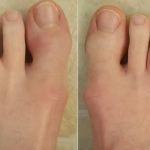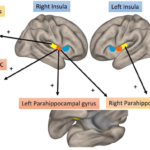 The use of objective, validated outcome measures to track progress in symptom control for patients with psoriatic arthritis was discussed in a session at the 2019 ACR/ARP Annual Meeting titled Optimizing Outcomes in Psoriatic Arthritis: A Domain-Based Strategy. In the years since this presentation, additional research has helped supply greater insights into this topic and show what the future may hold.
The use of objective, validated outcome measures to track progress in symptom control for patients with psoriatic arthritis was discussed in a session at the 2019 ACR/ARP Annual Meeting titled Optimizing Outcomes in Psoriatic Arthritis: A Domain-Based Strategy. In the years since this presentation, additional research has helped supply greater insights into this topic and show what the future may hold.
In the original session, Elaine Husni, MD, MPH, assistant professor of medicine and vice chair of the Department of Rheumatic and Immunologic Diseases at Cleveland Clinic Lerner College of Medicine, Case Western Reserve University, Cleveland, described two important advances: 1) domain-based outcome measures have been developed to address peripheral arthritis, axial arthritis, enthesitis, dactylitis and skin involvement, and 2) studies, such as the Tight Control of Psoriatic Arthritis (TICOPA) trial, have demonstrated how tight control of disease activity leads to improvements in outcome measures for patients.1
On the subject of domain-based outcome measures, Dr. Husni described some of the main measures being used in research and clinical practice. These include the Psoriasis Area and Severity Index (PASI) for skin disease, the ACR20/50/70 for peripheral arthritis, the Leeds Enthesitis Index (LEI), the Spondyloarthritis Research Consortium of Canada (SPARCC) Enthesitis Index and the Maastricht Ankylosing Spondylitis Enthesitis Score (MASES) for enthesitis, the Leeds dactylitis index for dactylitis, and the Bath Ankylosing Spondylitis Disease Activity Index (BASDAI) for axial disease.
One of the most important areas of research in psoriatic arthritis, Dr. Husni explained, is identifying and developing the optimal composite measures that will allow for accurate tracking of disease activity and be facile enough to perform quickly, yet accurately, in clinical practice. Some current composite measures include the Disease Activity in Psoriatic Arthritis (DAPSA) score, the Composite Psoriatic Disease Activity Index (CPDAI) and the Psoriatic Arthritis Disease Activity Score (PASDAS).
It is likely that, even in the future, no one composite measure will be perfect in patients with all variations of psoriatic arthritis. However, Dr. Husni noted, rheumatologists should continue to think critically and creatively on how best to measure outcomes for all disease states of psoriatic arthritis, such as for a new vs. an established diagnosis or for treatment-naive patients vs. treatment-refractory patients.
Raising the Bar
Since 2019, the number of effective treatments for psoriatic arthritis has continued to grow and, given these promising developments, Dr. Husni states that clinicians can feel comfortable in “raising the bar” on expectations for how much we can improve patients’ outcomes. The concept of minimal disease activity or remission has emerged as a reasonable outcome to seek when treating patients with psoriatic arthritis. These measures include Minimal Disease Activity (MDA) and DAPSA remission or low disease activity.
In a study by Coates et al., 60 experts reviewed 40 patient profiles from an observational database of patients with psoriatic arthritis. Based on this review, a definition for MDA emerged: A patient is classified as achieving MDA when five of the seven following criteria are met: tender joint count of 1 or fewer; swollen joint count of 1 or fewer; a PASI score of 1 or less or psoriasis involving 3% or less of body surface area; patient pain visual analog scale (VAS) score of 15 or less; patient global disease activity VAS score of 20 or less; health assessment questionnaire (HAQ) score of 0.5 or less; and tender entheseal points of 1 or fewer.2
MDA can be viewed as a state of disease activity in psoriatic arthritis rather than a continuous measure. This is helpful when evaluating patients with such a complex, multi-faceted disease.
Research has shown which patients may be more likely to achieve MDA. Gossec et al., noted in a review that male sex, lower functional impairment at baseline (as assessed by the BASDAI and HAQ), low disease activity at baseline, shorter symptom duration and greater general well-being (as assessed by global VAS) predict who will achieve MDA after treatment with tumor necrosis factor-α inhibitors. Predictors of achieving sustained MDA include lower functional impairment, lower disease severity, lower enthesitis count and absence of dactylitis at baseline.3
Despite identification of these possibly encouraging predictors for achieving MDA, many challenges remain in the world of psoriatic arthritis. As Ng and Jadon point out in a recent article on unmet needs in psoriatic arthritis, there is not yet a method to predict the optimal treatment strategy to achieve MDA and prevent adverse effects of medications early in the course of psoriatic arthritis disease.4 In addition, much remains to be done to prevent and address important comorbidities that track with psoriatic arthritis, such as metabolic syndrome and psychosocial burden.
Tapering
Dr. Husni points out that the concept of achieving MDA, or remission, has allowed for consideration of what was once a novel idea: de-escalation of therapy. In the world of rheumatoid arthritis, many withdrawal studies have been published in recent years. These studies explore what happens when patients who have achieved clinical remission of their disease have their disease-modifying treatments decreased in dose or frequency or discontinued altogether. In the world of psoriatic arthritis, this is a newer concept being further explored.

Dr. Husni
In the SPIRIT-P3 study, the authors conducted a multi-center, randomized, double-blind withdrawal study of biologic treatment-naive adult patients with psoriatic arthritis who were treated with open-label ixekizumab for 36 weeks. Patients who achieved MDA for longer than three months were randomized to blinded withdrawal of ixekizumab or to continue ixekizumab every two weeks until week 104, and patients who experienced relapse were then re-treated with ixekizumab every two weeks until week 104.
Out of an initial 394 patients, 158 (40%) achieved MDA and were randomized to either receive placebo or continue ixekizumab. In the placebo group, 85% of patients experienced relapse compared with 38% of patients in the continued treatment group. In the 67 patients who experienced relapse with treatment withdrawal, 64 patients (96%) achieved MDA again with re-treatment, with a median time of 4.1 weeks to achieve this outcome.5
This study illustrates a few important concepts, including that withdrawal of effective treatment in patients with psoriatic arthritis may precipitate disease relapse at higher rates than continuing treatment, but the recapture rate—that is, the ability to achieve MDA once again with re-treatment—may be quite high depending on the medication in question. More studies have been, and will be, conducted on this topic and, hopefully, will provide useful clinical data for a number of different medications.
Looking Forward
Dr. Husni notes that, in her opinion, the most exciting recent innovations are the extensive efforts now focused on measures specific to psoriatic arthritis rather than using or comparing measures from other forms of inflammatory arthritis, such as rheumatoid arthritis. Dr. Husni’s talk in 2019 and her updates in the present day provide fantastic insight into the state of psoriatic arthritis care.
Jason Liebowitz, MD, completed his fellowship in rheumatology at Johns Hopkins University, Baltimore, where he also earned his medical degree. He is currently in practice with Skylands Medical Group, N.J.
References
- Coates LC, Moverley AR, McParland L, et al. Effect of tight control of inflammation in early psoriatic arthritis (TICOPA): A UK multicentre, open-label, randomised controlled trial. Lancet. 2015 Dec 19;386(10012):2489–2498.
- Coates LC, Fransen J, Helliwell PS. Defining minimal disease activity in psoriatic arthritis: A proposed objective target for treatment. Ann Rheum Dis. 2010 Jan;69(1):48–53.
- Gossec L, McGonagle D, Korotaeva T, et al. Minimal disease activity as a treatment target in psoriatic arthritis: A review of the literature. J Rheumatol. 2018 Jan;45(1):6–13.
- Ng BCK, Jadon DR. Unmet needs in psoriatic arthritis. Best Pract Res Clin Rheumatol. 2021 Jun;35(2):101693.
- Coates LC, Pillai SG, Tahir H, et al. Withdrawing ixekizumab in patients with psoriatic arthritis who achieved minimal disease activity: Results from a randomized, double-blind withdrawal study. Arthritis Rheumatol. 2021 Sep;73(9):1663–1672.



